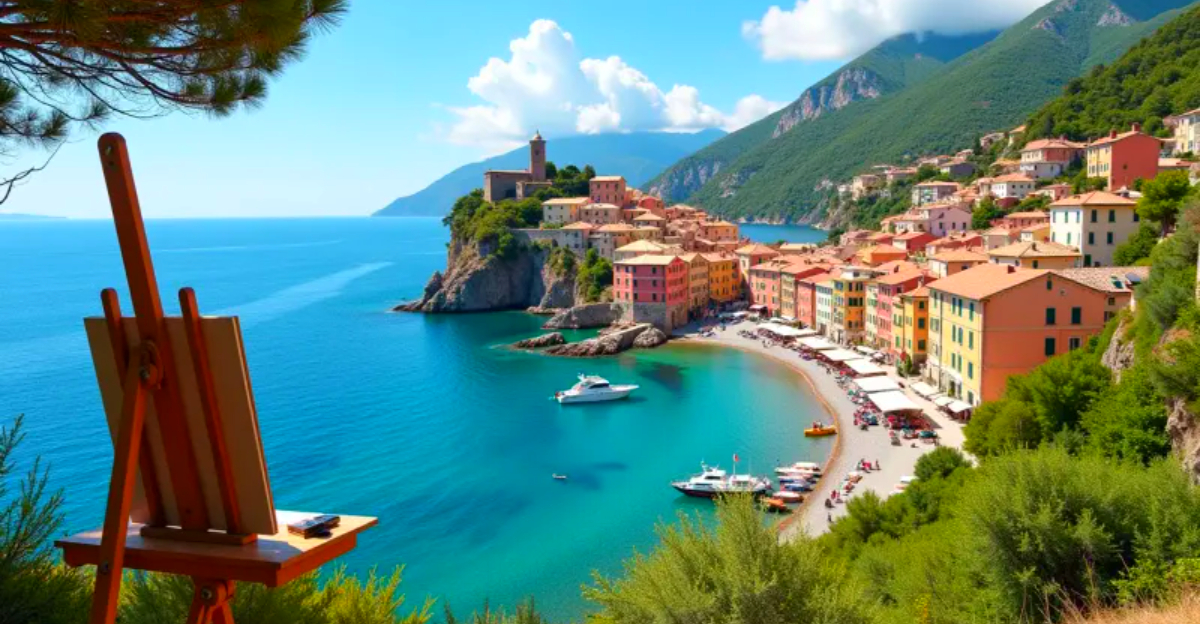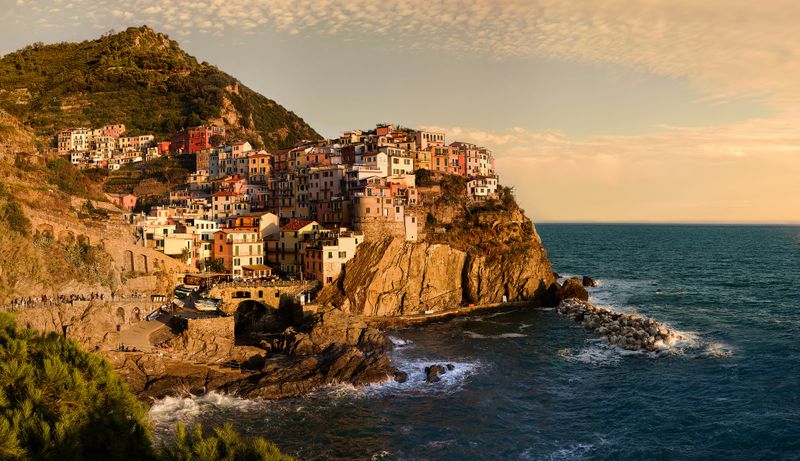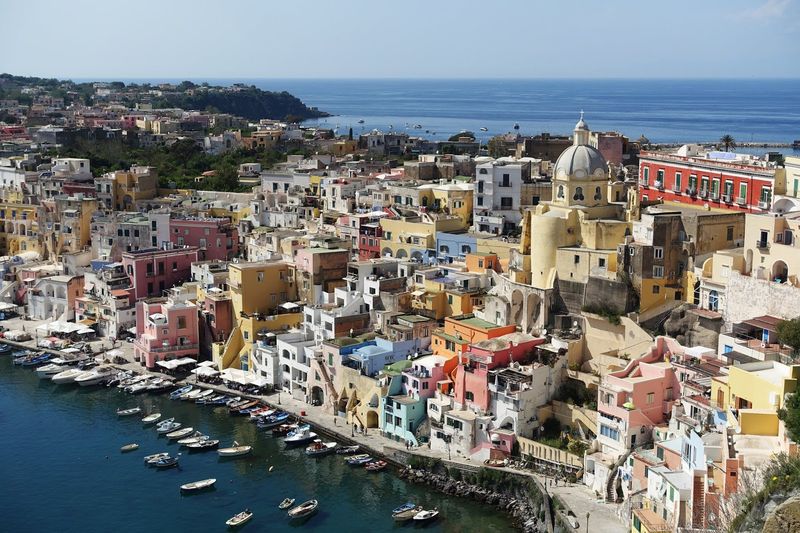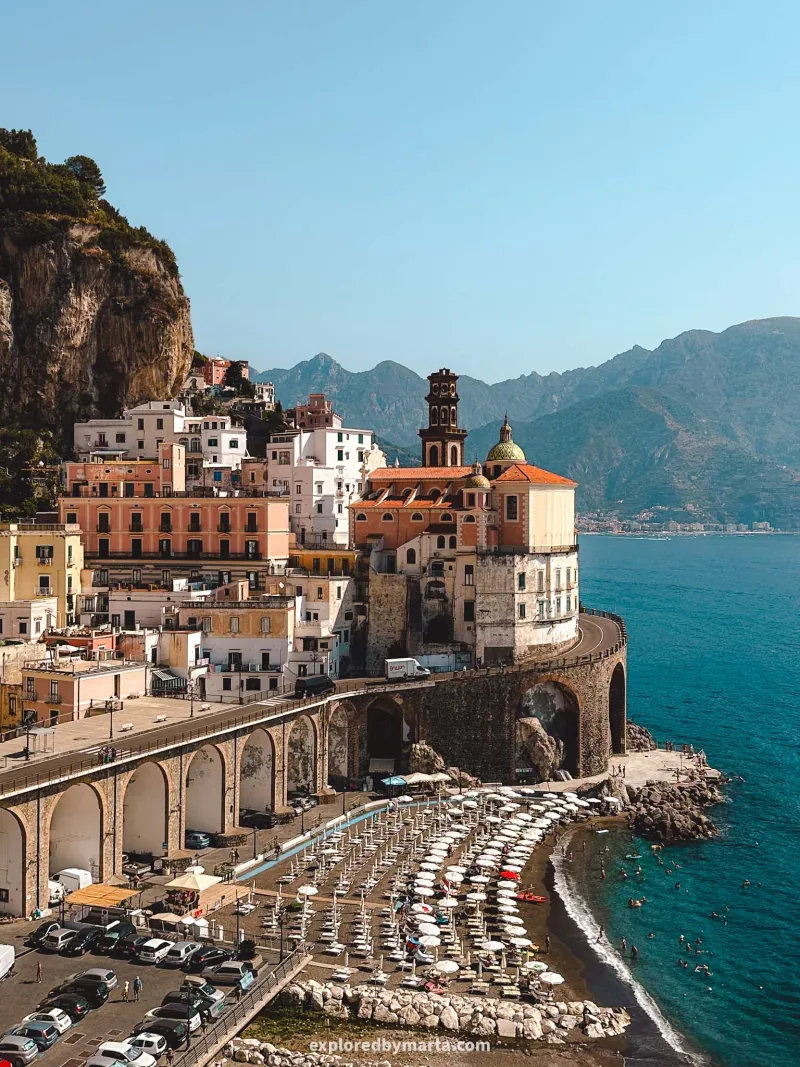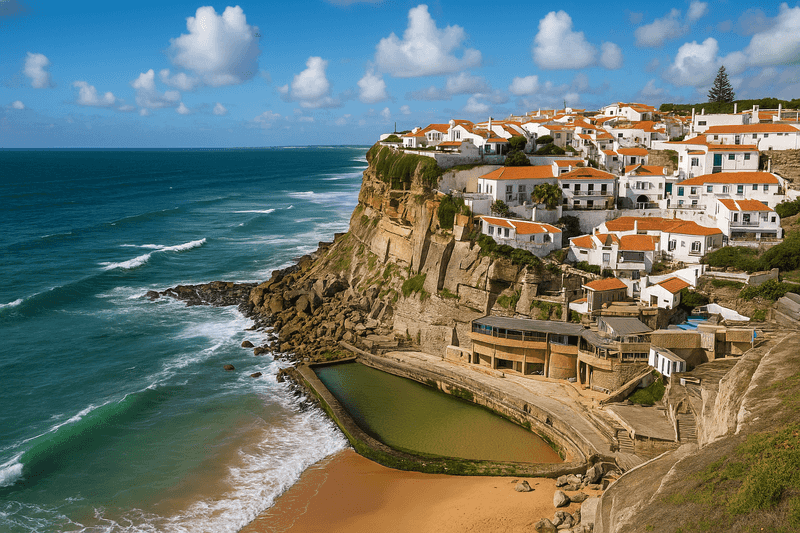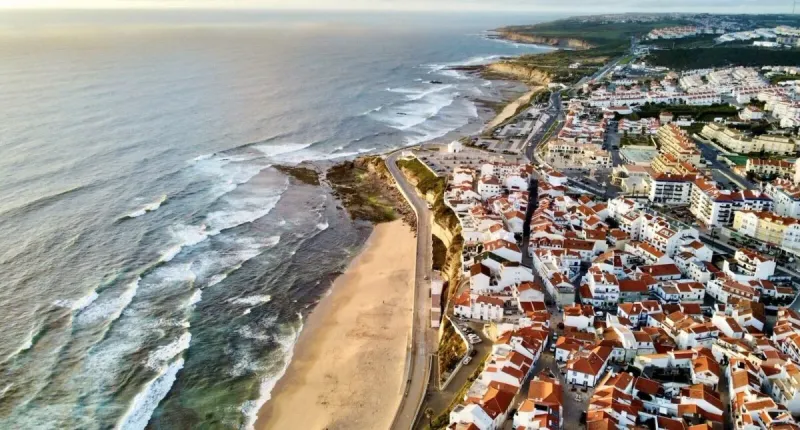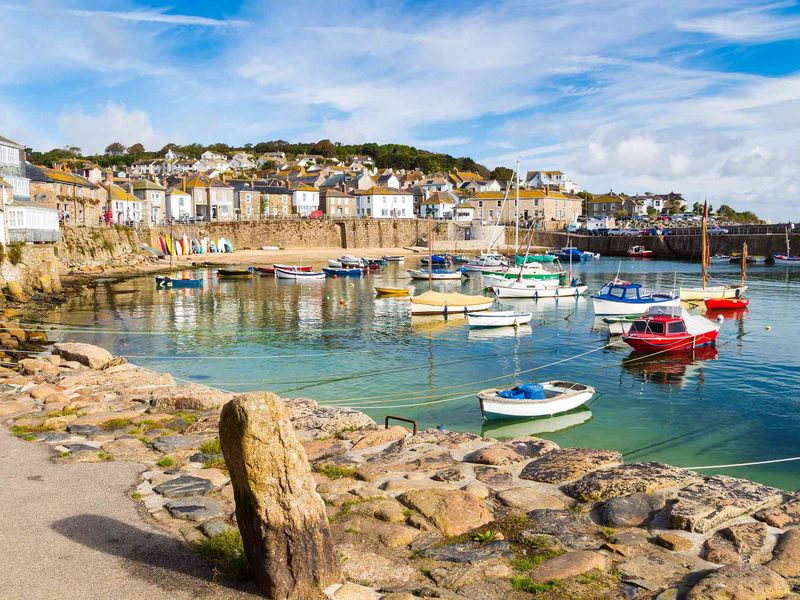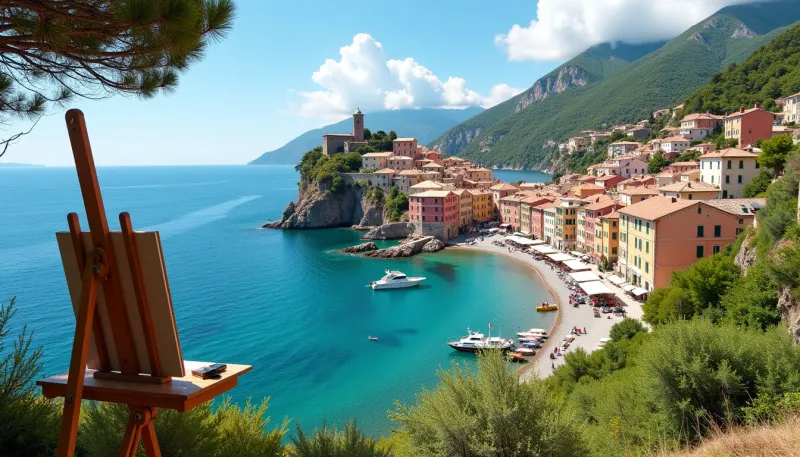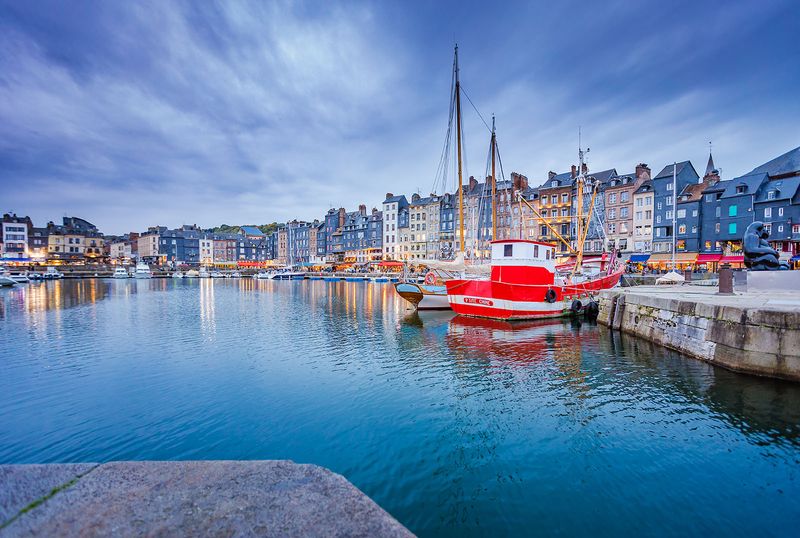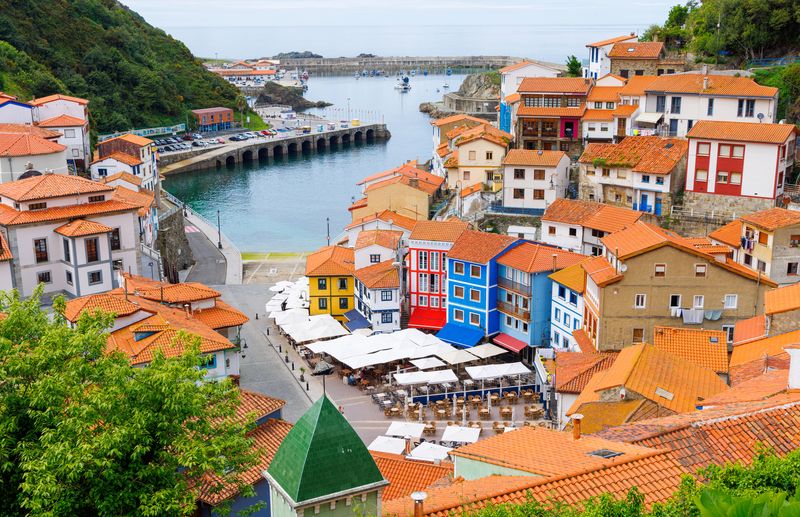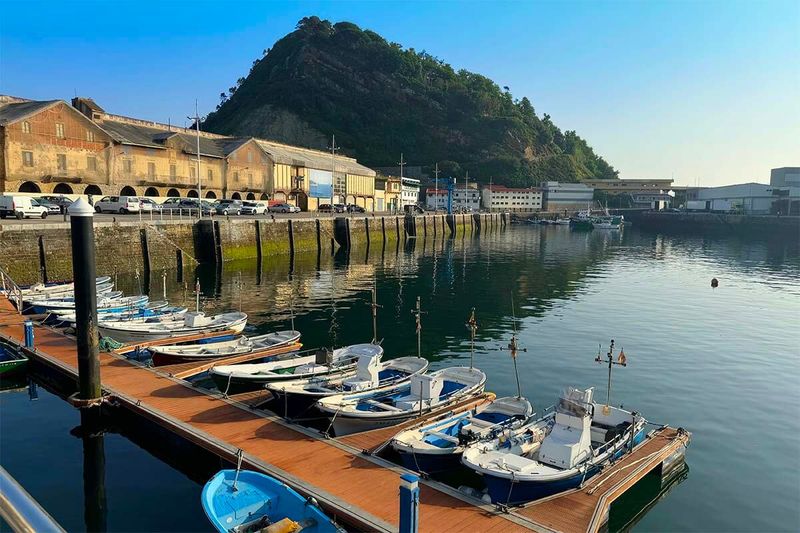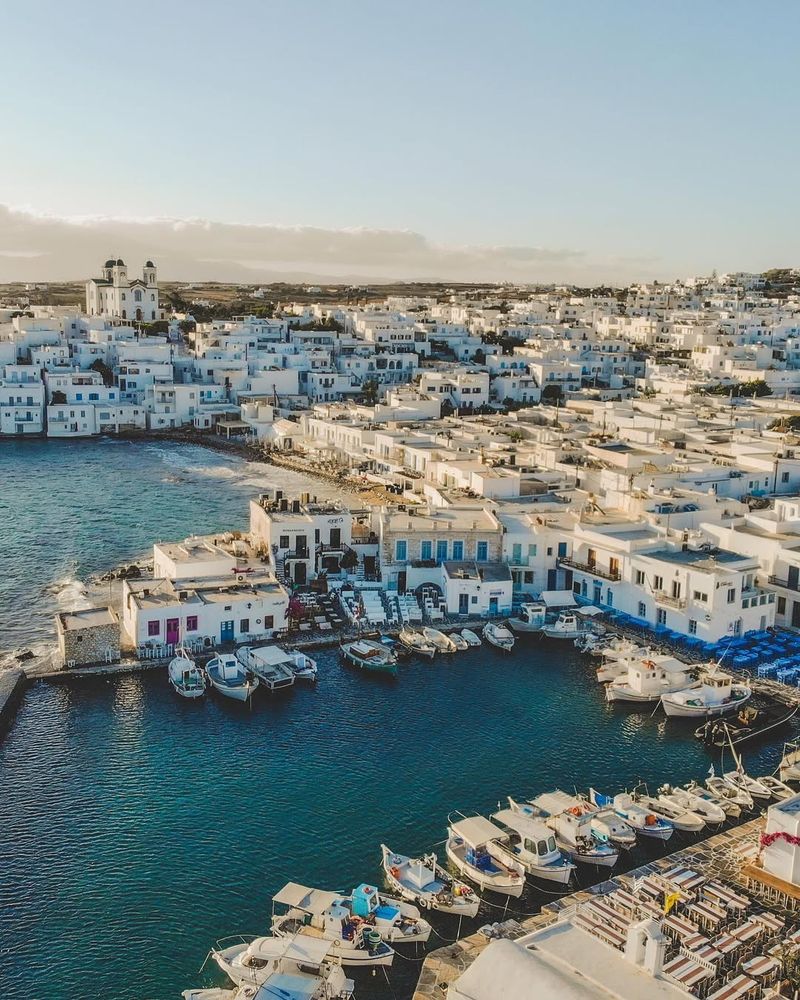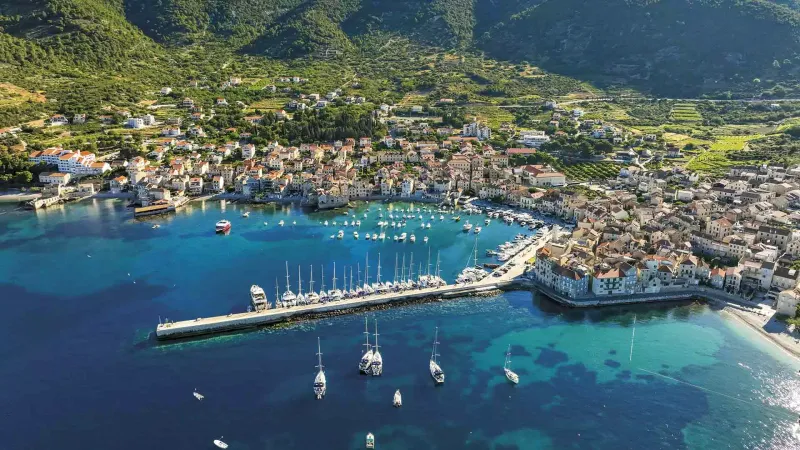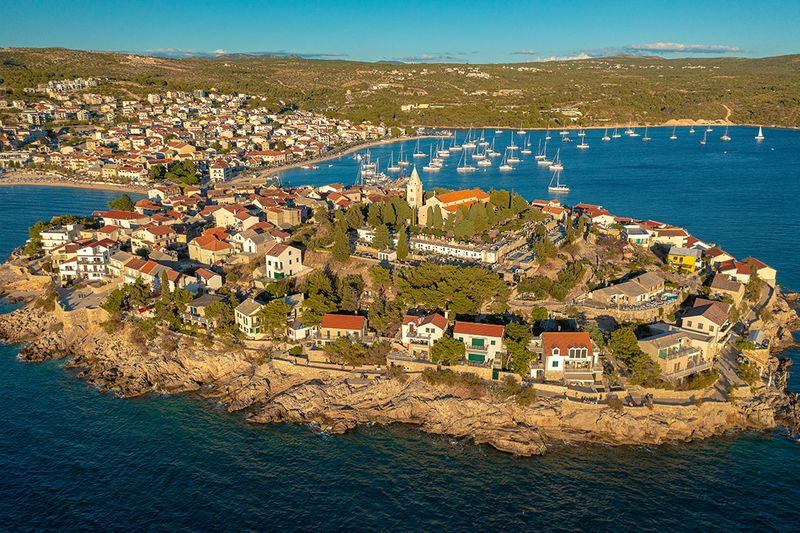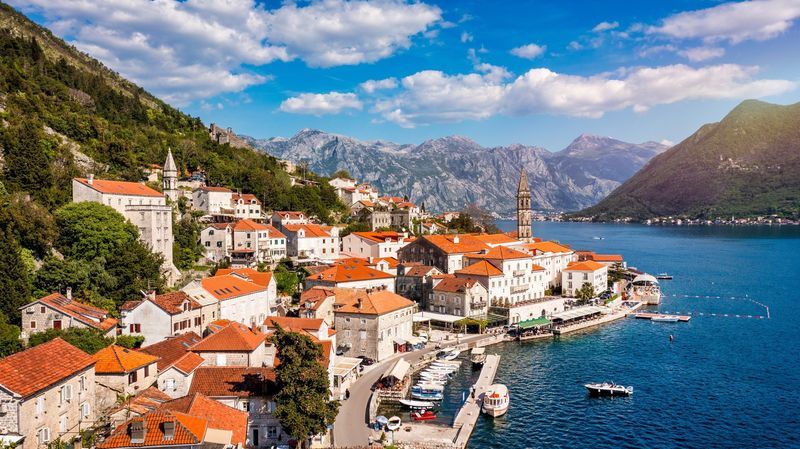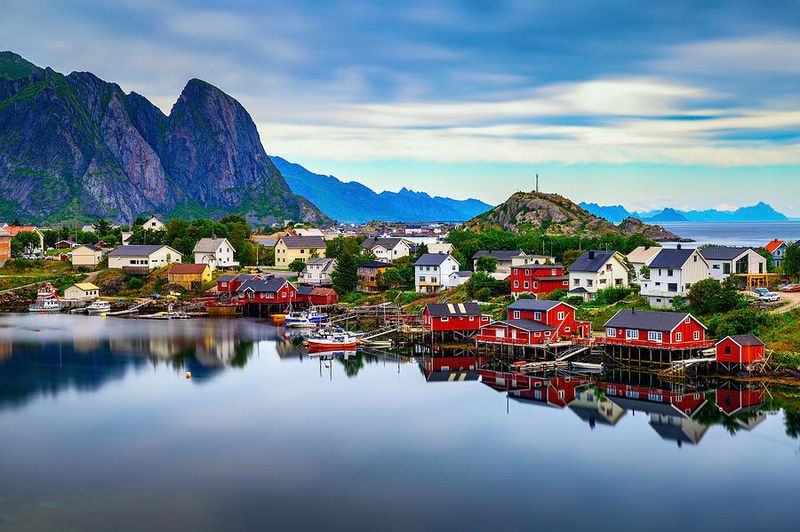Europe’s coastal villages offer the perfect escape from busy city life, where time slows down and every corner reveals a postcard-worthy view. Whether you crave fresh seafood by the water, quiet walks along dramatic shorelines, or simply a place to unwind with a good book, these charming seaside gems promise unforgettable weekend getaways.
1. Manarola, Cinque Terre, Italy
Perched dramatically on Liguria’s rugged coastline, Manarola claims the title of oldest among the famous Cinque Terre villages. Vine-covered terraces climb the hillsides while rainbow-hued houses stack vertically above a postage-stamp harbor where brave swimmers plunge into impossibly blue water.
The legendary Via dell’Amore cliff path connecting Manarola to neighboring Riomaggiore reopened in August 2024 with new visitor limits, making sunset strolls even more special. Fishermen still mend nets on the rocks, and locals sell limoncello from family recipes passed down through generations.
Stay until evening when the village transforms into a glowing jewel box against the darkening sea. Pair locally-caught anchovies with sweet Sciacchetrà dessert wine while fairy lights flicker on.
2. Marina Corricella, Procida, Italy
Procida’s most ancient fishing quarter spills down the hillside in a cascade of peach, lemon, and rose-colored homes that seem painted by an artist’s whimsical hand. Cars are banned here, so the only sounds are lapping waves, distant conversations, and the occasional meow from sun-drunk cats sprawled on weathered steps.
Fishermen still work from this harbor, their nets spread across the quayside to dry in Mediterranean sunshine. Watching their boats return at dawn feels like stepping into a slower century, when island rhythms dictated every day.
After a leisurely waterfront lunch that stretches past three courses, find a shaded spot for an afternoon nap. The village practically insists on it.
3. Atrani, Amalfi Coast, Italy
Tucked between towering cliffs and glittering sea, Atrani holds the distinction of being Italy’s smallest municipality by area—yet it packs enormous charm into every square meter. Most tourists rush past toward glamorous Amalfi, leaving this baroque gem blissfully quiet for those who know better.
A tiny piazza opens directly onto the beach like a secret revealed, where locals gather for evening passeggiata while children splash in gentle waves. Shaded medieval alleys twist upward from the shore, their cool stone passages offering relief from summer heat.
Visit late afternoon when day-trippers have departed and you’ll have the beach nearly to yourself for an unhurried swim beneath the cliffs.
4. Azenhas do Mar, Portugal
Whitewashed cottages tumble down a sheer cliff face as if frozen mid-avalanche, stopping just short of where Atlantic breakers crash against dark rocks. A natural seawater pool carved into the coastline invites unhurried dips without battling ocean currents—pure magic on warm afternoons.
Part of the scenic Sintra coast, this village seems designed specifically for golden-hour wanderers with cameras and romantic souls seeking dramatic backdrops. Narrow lanes wind between sun-bleached homes where laundry flutters like prayer flags in the sea breeze.
Reserve a table at one of the cliff-edge restaurants for sunset, when the sky ignites in orange and pink while fresh-caught fish arrives at your table still sizzling.
5. Ericeira, Portugal
Once a simple fishing village, Ericeira has evolved into Portugal’s coolest surf town—and Europe’s only designated World Surfing Reserve—while somehow keeping its unpretentious soul intact. Cobbled lanes connect oceanfront miradors where you can watch wave sets roll in like clockwork, carrying wetsuit-clad figures across perfect swells.
The culture here still follows tidal rhythms rather than tourist schedules. Fishermen haul catches alongside board-toting surfers, and grilled sardines remain the meal of choice in family-run tascas throughout the old town.
Spend a morning watching longboarders glide across Ribeira d’Ilhas, then share plates of charcoal-grilled fish with newfound friends as afternoon stretches into evening.
6. Mousehole, Cornwall, England
Granite cottages huddle around a pocket-sized harbor near Penzance, their thick walls built to withstand centuries of Atlantic gales. Mousehole—pronounced ‘Mowzel’ by locals—charms equally in quiet spring days and during December when thousands of fairy lights transform the harbor into Cornwall’s most beloved festive spectacle.
Narrow lanes barely wide enough for two people wind between fishermen’s homes, occasionally opening to glimpses of boats bobbing in the protected basin. The village cat, a local celebrity, often appears in shop windows and on garden walls.
Trace the harbor’s stone walls at your leisure, hunt down proper Cornish cream tea, and time your swim for high tide in the sheltered rock pool.
7. Collioure, Occitanie, France
Matisse and Derain didn’t stumble upon this Catalan-French harbor by accident—the light here practically begs to be painted, turning ordinary facades into studies of color and shadow. Pastel houses ring the waterfront where an old royal castle stands guard, and anchovy tradition runs as deep as artistic heritage.
Tiny beaches tuck between rocky outcrops, each one perfect for an hour of sun-soaked laziness between gallery visits. The Fauvism walking trail connects sites where those revolutionary painters set up their easels over a century ago, capturing the same luminous quality that still enchants visitors today.
Alternate between harborside cafés and hidden coves, letting the afternoon evaporate in true Mediterranean fashion.
8. Honfleur, Normandy, France
Half-timbered houses lean companionably around the Vieux-Bassin, their reflections rippling in water where fishing boats nudge against bistro terraces. Honfleur has inspired artists for centuries—native son Eugène Boudin gets his own museum here—and the creative atmosphere lingers in galleries tucked along every cobbled street.
The entirely wooden Sainte-Catherine church glows like honey at dusk, its ship-builder construction unique among French churches. Fishermen still sell catches from the quayside market on Saturday mornings, continuing traditions that predate the town’s artistic fame.
Sketch the forest of masts reflected in the basin, wander to Sainte-Catherine before closing time, then settle into a window seat for dinner overlooking the harbor lights.
9. Cudillero, Asturias, Spain
Candy-colored homes cling improbably to near-vertical cliffs, forming a horseshoe amphitheater around a working fishing harbor that seems almost too picturesque to be real. Yet fishermen genuinely work these waters, and the village retains its maritime soul despite appearing on countless postcards.
Steep lanes connect different levels of the village, each turn revealing another angle of the dramatic setting where green hillsides meet wild Atlantic waves. The local dialect still preserves ancient fishing terminology passed down through generations of seafaring families.
Climb the lighthouse trail for panoramic views and steady sea breezes that clear your head better than any meditation app. The ascent rewards with perspectives that explain why this north-coast hideaway captivates everyone who visits.
10. Getaria, Basque Country, Spain
Fashion icon Cristóbal Balenciaga was born here, and his museum now brings design pilgrims to this working fishing port where grilled turbot remains the star attraction. Getaria masterfully blends maritime grit with cultural sophistication—txakoli vineyards climb the slopes above town while fishing boats still crowd the harbor below.
The local specialty is turbot cooked simply on a parrilla grill, its delicate flesh enhanced by nothing more than sea salt and lemon. Order it at any waterfront asador and you’ll understand why Basque cuisine commands global respect.
After lunch, walk off your meal along the promenade toward Mount San Antón, the rocky promontory locals call “the mouse” for its distinctive silhouette rising from the sea.
11. Naoussa, Paros, Greece
Bougainvillea spills over whitewashed walls in explosions of magenta and purple, framing narrow alleys that open unexpectedly onto the sparkling harbor. Naoussa balances island sophistication with fishing-village authenticity—designer boutiques coexist with nets drying in the sun, and cocktail bars share quaysides with traditional tavernas.
The remains of a small Venetian harbor fortress add romantic ruins to evening strolls, when locals and visitors alike drift between waterfront cafés in that aimless Greek way that feels more like meditation than movement. Several swimming coves lie within easy walking distance for those seeking quieter water.
Let an evening unfold without agenda around the old harbor, where the only decision required is which table offers the best view of sunset.
12. Komiža, Vis Island, Croatia
Sheltered by hills on Vis Island’s sunnier western shore, Komiža maintains the unhurried rhythm that’s vanished from busier Dalmatian destinations. Stone houses cascade down narrow alleys to a bay filled with colorful fishing boats, and genuine fishermen still outnumber yacht owners in the harbor.
The town’s maritime heritage runs deep—locals claim some of the Adriatic’s best seafood knowledge, passed through fishing families for generations. A small museum celebrates this connection, displaying traditional fishing tools and documenting the island’s fascinating history.
Schedule nothing more ambitious than a late seafood lunch followed by an afternoon nap, then stroll to nearby Gusarica beach when the day cools. This is the Dalmatian coast as it used to be.
13. Primošten, Croatia
Old Primošten occupies a tiny peninsula that was once a genuine island, cut off from the mainland until a causeway connected it centuries ago. Today you can wander its stone lanes in minutes, circling between sea views and vineyard-draped hills that produce the prized local Babić wine.
The hilltop Church of St George offers sunset views that justify the climb—turquoise water on three sides, terraced vineyards inland, and the medieval core spread below like a history lesson in stone. Several long pebble beaches stretch along the nearby coast for those craving swimming between sightseeing.
Time your visit for golden hour at the church, then descend for dinner paired with wine from those same hillside vines you admired from above.
14. Perast, Bay of Kotor, Montenegro
Baroque palaces line an impossibly serene waterfront, their weathered elegance reflected in mirror-calm bay waters. Two tiny islands float just offshore—including the famous man-made Our Lady of the Rocks, built stone by stone over centuries by sailors fulfilling a vow.
A short boat ride from the quay delivers you to this remarkable islet church, where the interior glows with silver votive offerings and embroidered panels created by a sea captain’s wife over decades of waiting. Back on shore, Perast moves to the rhythm of church bells echoing across water and mountains.
Claim a spot on the stone promenade with morning coffee and simply exist for a while, watching light shift across the bay as birds wheel overhead.
15. Reine, Lofoten, Norway
Jagged granite peaks plunge directly into glassy fjords around this fishing hamlet frequently called Norway’s most beautiful village—and the competition is fierce. Traditional rorbuer cabins in red and ochre dot tiny islets connected by photogenic bridges, creating scenes that look digitally enhanced until you’re standing right there.
The landscape does all the heavy lifting here; your job is simply to witness it between cloud breaks. Read on a pier with mountains reflected in still water, or take the bus along the coast and let scenery unfold through the window like a slow-motion epic.
Reine proves that sometimes the best weekend getaway involves doing as little as possible in the most spectacular setting imaginable.
